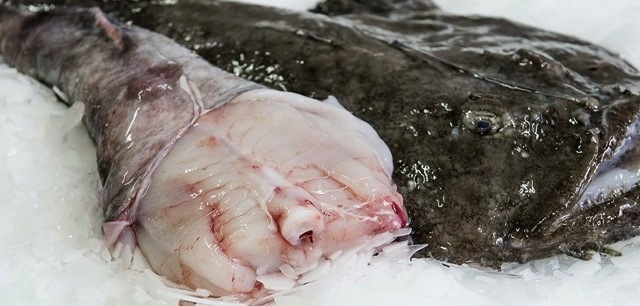Despite its repulsive appearance, the anglerfish, more commonly known as monkfish, is quite adaptable. Its flesh is easy to cook and boneless. Perfect for celebrations!
The clothes do not make the monk
Its flattened body and frightening, oversized head (one-third of its weight!) have earned it nicknames like “toad” or “sea devil.” To deceive others, it swapped its name “anglerfish” for “monkfish” and hid its head under the stalls. It worked!
A natural anti-aging
Rich in proteins, it is also very lean, providing no more than 100 kcal per 100g. Its content in omega-3 and especially selenium is significant and valuable in the fight against cellular aging. It also contains phosphorus, potassium, iodine, and vitamins from the B and PP groups.
When buying, forget the head
It is most often sold as monkfish tails, sometimes as fillets or steaks. Its flesh should be firm and very white. When purchasing, plan for 300g per adult (considering 50% waste). Its cheeks and liver are choice cuts.
Even if ugly, don’t keep it waiting
Like all fish, it cannot withstand waiting and must be consumed immediately. It can be kept for two days maximum, in its skin, in the coldest part of the refrigerator, or frozen.
Handle with care
Be sure to remove the black skin and the whitish film underneath. Rinse thoroughly.
Into the pan and let’s go!
Baked, poached, pan-fried, sautéed, en papillote, skewered, steamed: monkfish suits all cooking styles and loves spices. Boneless, it’s easy to eat for the youngest. Go all out and cook it Basque-style or American-style (also known as Armorican style) with a sauce made from fish stock, tomatoes, and shallots. It’s also delicious cooked with coconut milk and curry.


